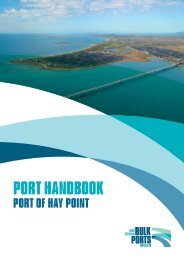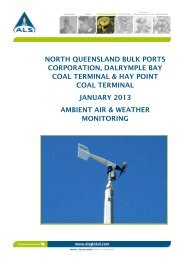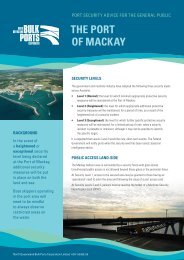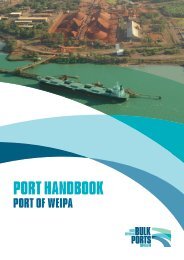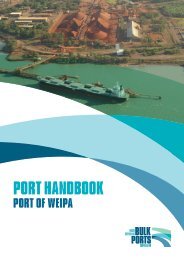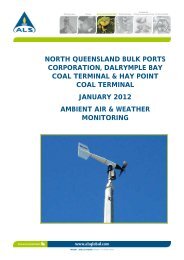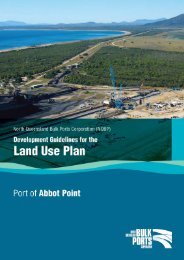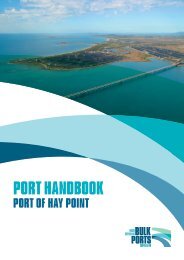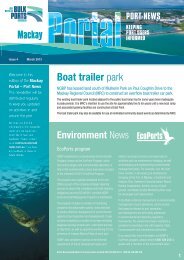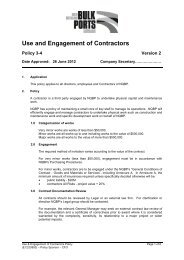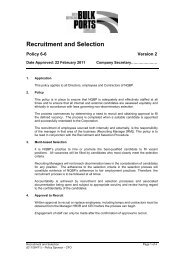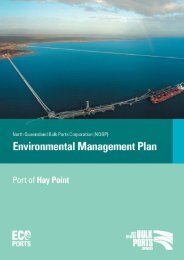Terms of Reference - North Queensland Bulk Ports Corporation
Terms of Reference - North Queensland Bulk Ports Corporation
Terms of Reference - North Queensland Bulk Ports Corporation
- No tags were found...
Create successful ePaper yourself
Turn your PDF publications into a flip-book with our unique Google optimized e-Paper software.
3.6. The environmental impact assessment process3.6.1. Methodology <strong>of</strong> the EISProvide an outline <strong>of</strong> the environmental impact assessment process, including the role<strong>of</strong> the EIS in the Coordinator-General’s decision making process. Include informationon relevant stages <strong>of</strong> the EIS development, statutory and public consultationrequirements and any interdependencies that exist between approvals sought. Theinformation in this section is required to ensure:• relevant legislation is addressed• readers are informed <strong>of</strong> the process to be followed• stakeholders are aware <strong>of</strong> any opportunities for input and participation.3.6.2. Objectives <strong>of</strong> the EISProvide a statement <strong>of</strong> the objectives <strong>of</strong> the environmental impact assessment process.The structure <strong>of</strong> the EIS can then be outlined and used to explain how the EIS will meetits objectives. The purpose <strong>of</strong> the EIS is to:• provide public information on the need for the project, alternatives to it and optionsfor its implementation• present the likely effects <strong>of</strong> the project on the natural, social and economicenvironment• demonstrate how environmental impacts can be avoided, managed or mitigated andthe <strong>of</strong>fsets for any residual impacts• provide information to formulate the project’s construction and operationenvironmental management plans (EMPs).3.6.3. SubmissionsInform the reader how to properly make submissions on the EIS and what form thesubmissions should take. Inform the reader how and when properly made publicsubmissions on the EIS will be addressed and taken into account in the decisionmakingprocess. Also indicate any implications for submissions in the event <strong>of</strong> anyappeal processes (e.g. material change <strong>of</strong> use (MCU) applications under SPA).3.7. Public consultation processOverviewThe public consultation process should provide opportunities for communityinvolvement and education. It may include interviews with individuals, publiccommunication activities, interest group meetings, printed material and othermechanisms to encourage and facilitate active public consultation. The publicconsultation processes (community engagement) for all parts <strong>of</strong> the EIS should beintegrated.Consultation with advisory agencies should be the principal forum for identifyinglegislation, regulations, policies and guidelines relevant to the project and EIS process.Contents <strong>of</strong> the EISDudgeon Point Coal Terminals Project<strong>Terms</strong> <strong>of</strong> reference for an environmental impact statement- 9 -



